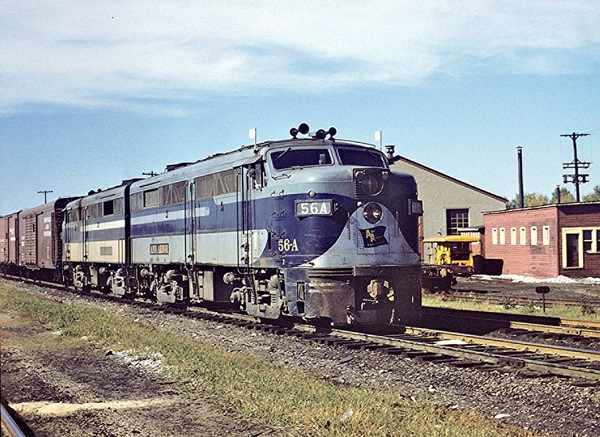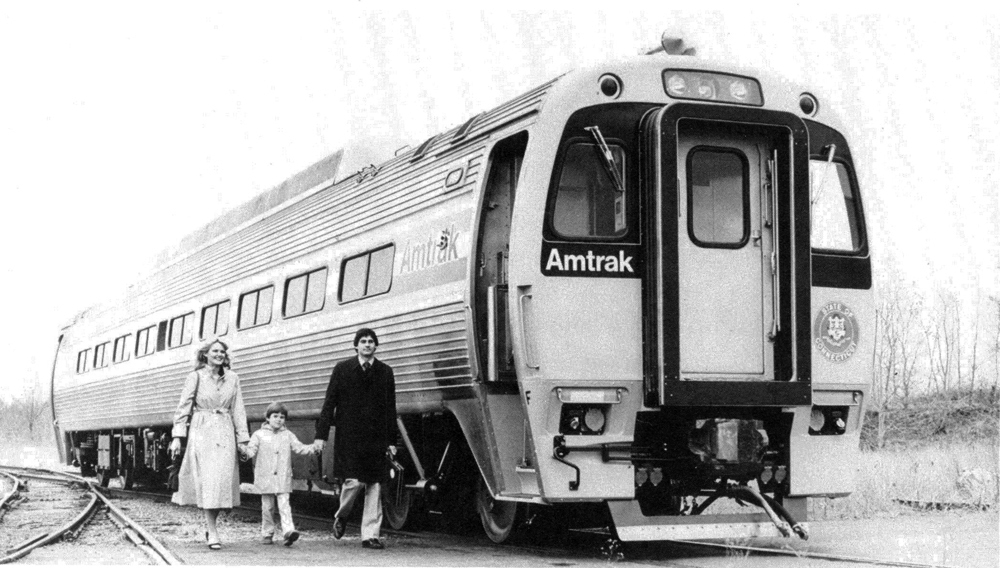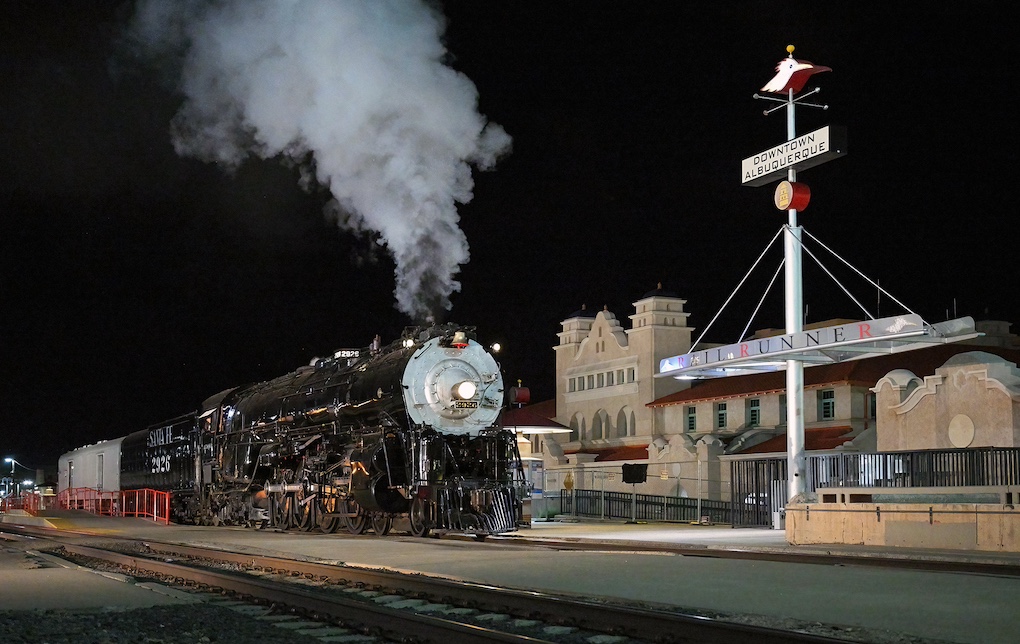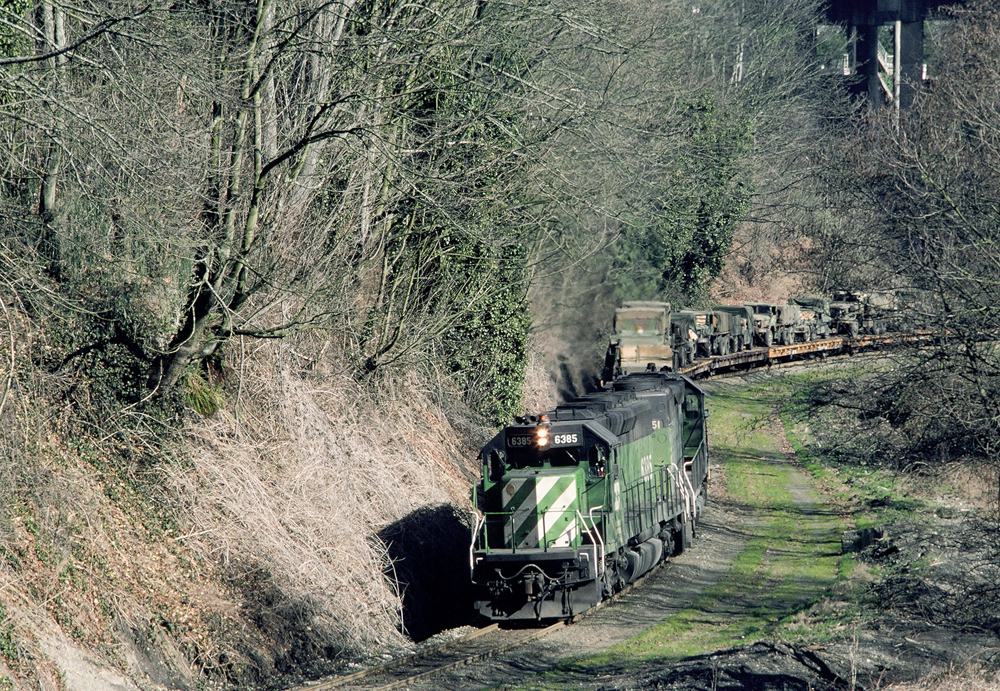
I got a late afternoon call to be the rear brakeman on train No. 1/146/05 (South Pool, Seattle to Portland, Ore.) on Aug. 5, 1979. We were at our away from home terminal of Portland. My crew that day was conductor Duke D., engineer Les M., and head brakeman Pete T. I was working the rear brakemen spot with Duke. Duke was a very patient man as I would soon learn.
We received this train from the Southern Pacific. After cutting their power off, we then added ours at the Hoyt Street Roundhouse in downtown Portland. The power we used were solid F units. If I correctly recall an A-B-B-A set of EMD covered wagons.
The train consisted of 72 cars of Army equipment for a station called Mobase on the Fort Lewis military reservation. The interesting thing about this trip was using the Lakeview Subdivision between Tenino and the Moon Yard in Tacoma, Wash. This was the original main line of Northern Pacific into Tacoma. It was still used for high wide loads that didn’t have clearance at Nelson Bennett Tunnel of the Point Defiance bypass. The first 12 cars were wide loads for a different part of Ft. Lewis. The regular Mobase local would take care of them.
I rode the locomotives instead of the caboose to be in place to help with the work at Mobase. We picked up the Centralia Trainmaster at the depot in Centralia, Wash. I do not recall why he came along, other than Pete and I were new. I was 16 days short of my first full year, Pete was good help, but even newer than me.
The train took a right turn from the Seattle Subdivision at Tenino to the Lakeview Subdivision. The Lakeview Subdivision cut through the Base. As we headed to Mobase, local folks were standing out in front of their homes watching this big train go by. I still wonder what people along the line thought seeing a mainline train on the almost forgotten part of the subdivision. Then, it was starting to get dark.
By the time we got to Mobase it was pitch black out. We cut the caboose off and got ready to shove 60 cars of our 72 into the interchange at Mobase. The Army would take care of switching the interchange later. They had their own railroad detachment. I’ve always heard stories of how well-maintained the Army equipment and roundhouse is — like the floor of the roundhouse being polished to a degree you could eat from it.
As Pete and I climbed up on the last flatcar, we found a place to sit on an Army tank. The tracks curved off to a 90-degree angle. Pete and I were instructed to shove about 40 cars and watch for a gate that we had to stop and open, and then shove into four interchange tracks. The only light outside was coming from our lanterns, as we began our shove for about 30 cars, all was quiet. Suddenly out of the pitch black, an automobile rounded a corner on the only grade crossing at a high rate of speed. We both started waving our lanterns to signal the driver of our presence.
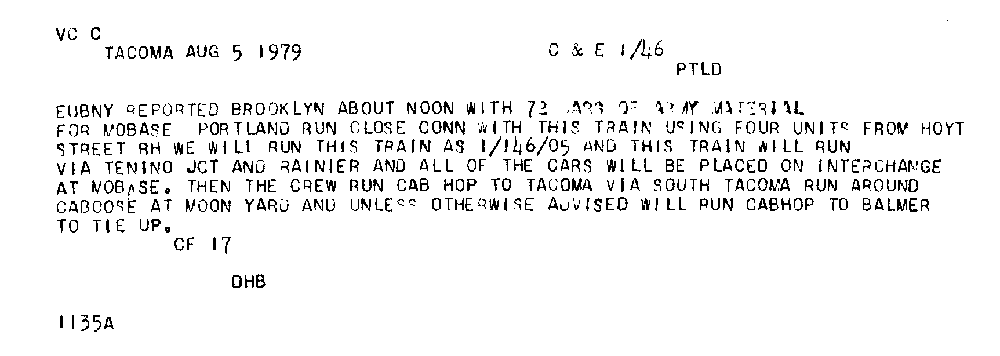
Luckily, we got his attention just in time for me to turn and see the Army gate. I called Les on the radio, “Easy, easy, that will do … PLUG IT!” BANG, right through the gate we went. After Les reset the air, Pete and I were not getting any. When Les put the train into emergency we got a drawbar behind one of the wide loads. Duke and the trainmaster took care of that. While they were working on that, Pete and I were trying to figure out how to remove the gate now stuck under the train.
A brief time later the train was back together. Pete and I decided we needed to have Les shove half a car to get the gate between cars to remove it. We soon had another issue, when I gave Les the signal to stop, the gate hit the cut lever as the slack ran out causing another separation and loss of air. We did this three times with no luck. On the fourth try, Les shoved with enough air brakes set that I could hear how hard the power was shoving, which gave us a perfect spot.
Once we got the train put away, the trainmaster asked us if there was something they could do to prevent a repeat of our escapade. I simply replied, “Tell the Army to paint the gate something besides Olive Drab.” Pete and I never heard another thing about it from management (try that today).
I heard later that the Army put up enough reflective material on that gate that there was no way to miss it. I do know that the next day’s Mobase local crew was amused about having to fix our mess.
That, however, is another story for another time. Good times.
Be sure to read the previous column, “An engineer’s life: Mojave Green.”






